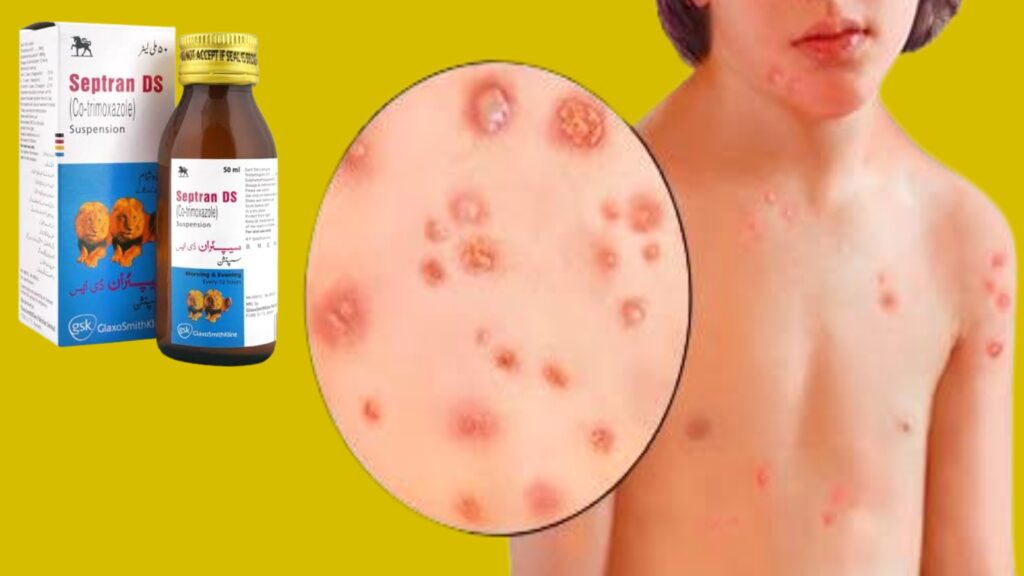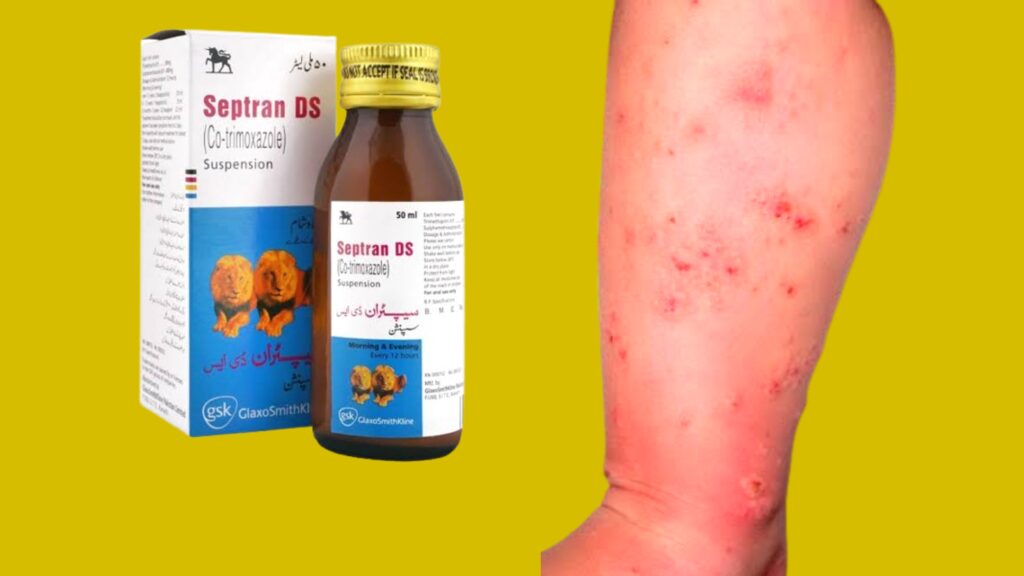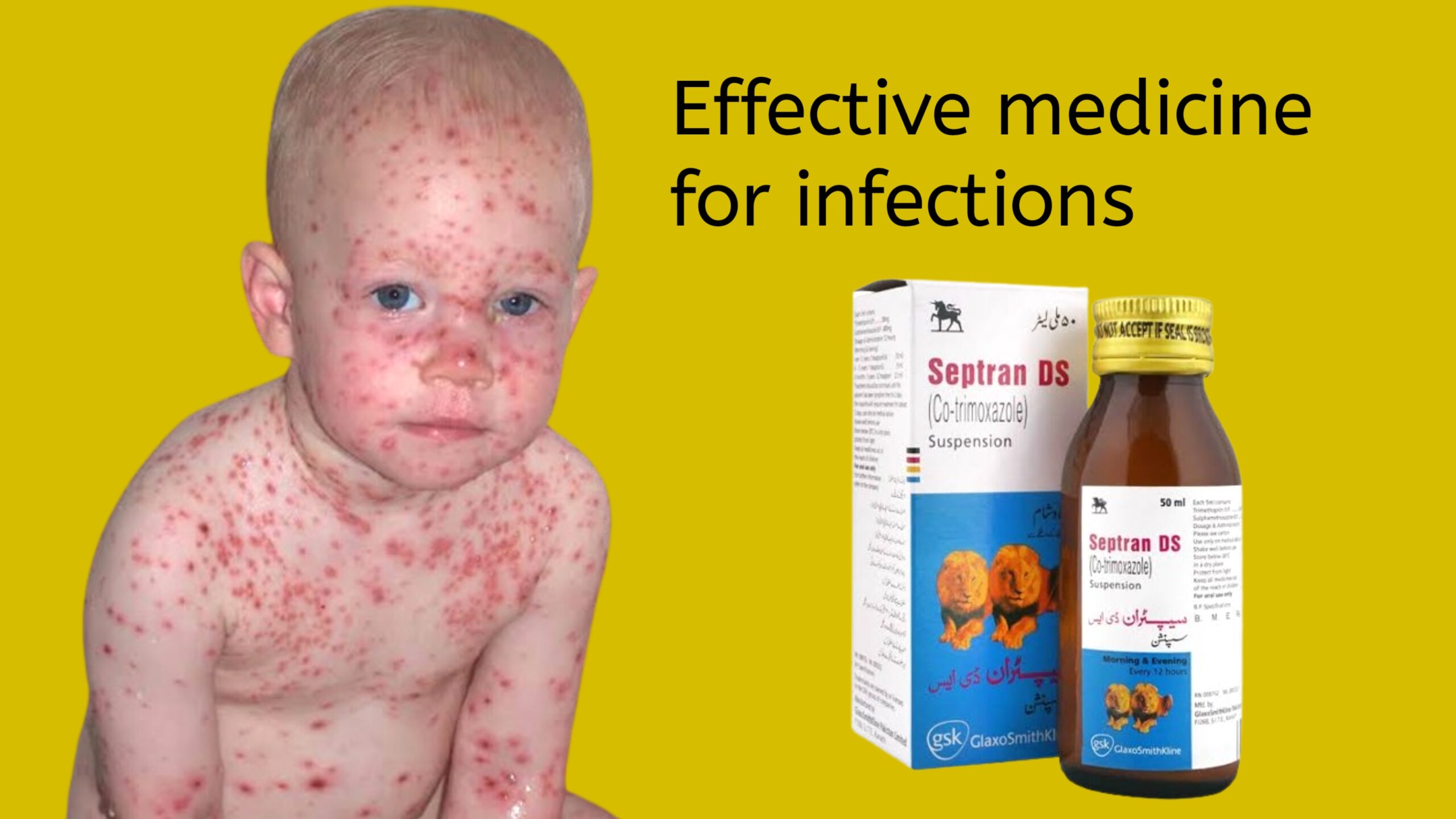Septran DS Syrup:
Septran DS Syrup is an antibiotic syrup.
It is used in most any infection.
It can be used in various diseases.
For what disease is it used:
Syrup is mostly administered to children.
You can also use it if your child has a nasal infection.
If your child has intestinal inflammation, you can use this syrup.
If your child has an infection on the inner side of the ear, you can use it.
If your child has allergies and develops a rash, use this syrup and it will get relief soon.
If your child gets red spots all over his body, then you should use this syrup.
If your child has itching on his body and spots on his mouth, then you should use this syrup.
If your child has itchy scalp and rashes, then you should use this syrup.
If your child has cold or throat infection then you can use this syrup.
If your child has a pain in the mouth and the teeth become fibrous, then you should use this syrup.
If your child often gets an infection between the toes, which causes sores between the toes, then you should use this syrup.
If your child falls down while playing, his body gets injured, then you should use this syrup continuously, it will heal the wounds quickly.

Side effects:
Consuming the syrup may cause vomiting.
Consuming this syrup may cause irritation.
Keep this syrup in a cool place away from sunlight.
Consuming too much of this syrup can cause stomach upset.
Consuming more of this syrup can cause stomach acidity.
Consult your doctor if any of these symptoms occur after using the syrup.

How to use:
Children 6 months to 5 years old should use 2.5 ml once a day.
Children aged 5 to 12 years should use 5ml once a day.
For people over 12 years of age, take 2 tablespoons daily.
Continue medication for 2 days after symptom relief.
Septran DS Syrup contains:
1.Trimethoprim.
2.Sulphamethoxazole.
Trimethoprim: Trimethoprim, an antibiotic, rarely triggers allergic reactions, but they can occur. Allergic responses to trimethoprim may manifest as rashes, itching, or swelling. In severe cases, it can lead to anaphylaxis, causing difficulty breathing and swelling of the face, lips, or tongue. Stevens-Johnson syndrome and toxic epidermal necrolysis are rare but severe skin reactions associated with trimethoprim allergy.
Immediate medical attention is crucial if any signs of allergic reaction develop while taking trimethoprim. Allergies to trimethoprim can be diagnosed through skin tests or blood tests conducted by healthcare professionals. Patients with known allergies to trimethoprim should avoid it and inform their healthcare providers about their allergy history. Trimethoprim is often combined with sulfamethoxazole in medications like Bactrim or Septra, and allergic reactions can also occur to the sulfonamide component.

Sulphamethoxazole: Sulfamethoxazole is a sulfonamide antibiotic commonly used to treat various bacterial infections. However, it can also induce allergic reactions in some individuals. These allergic reactions range from mild rashes to severe reactions like Stevens-Johnson syndrome or toxic epidermal necrolysis. Allergic reactions to sulfamethoxazole are more common in people with a history of allergies to other sulfa drugs, such as sulfadiazine or sulfamethoxazole-trimethoprim.
The allergic response typically involves the immune system mistakenly identifying sulfamethoxazole as harmful, triggering an inflammatory response. Symptoms of an allergic reaction to sulfamethoxazole may include itching, hives, swelling, difficulty breathing, and in severe cases, anaphylaxis. It’s crucial for individuals with known sulfa drug allergies to inform their healthcare providers before taking sulfamethoxazole or any medication containing sulfa components. In such cases, alternative antibiotics may be prescribed to avoid allergic reactions.

| Advantages | Disadvantages |
| 1.Drains pus. | 1.Can be panic. |
| 2.Heals the wound. | 2.Nausea may occur. |
| 3.Eliminates infection. | 3.Stomach upset may occur. |
| 4.Eliminates allergies. | No more disadvantages… |
Table of Contents
See our other Post
See our othre Site

Very Knowledgeable
priligy generico 2006 Quantitative effect of CYP2D6 genotype and inhibitors on tamoxifen metabolism implication for optimization of breast cancer treatment